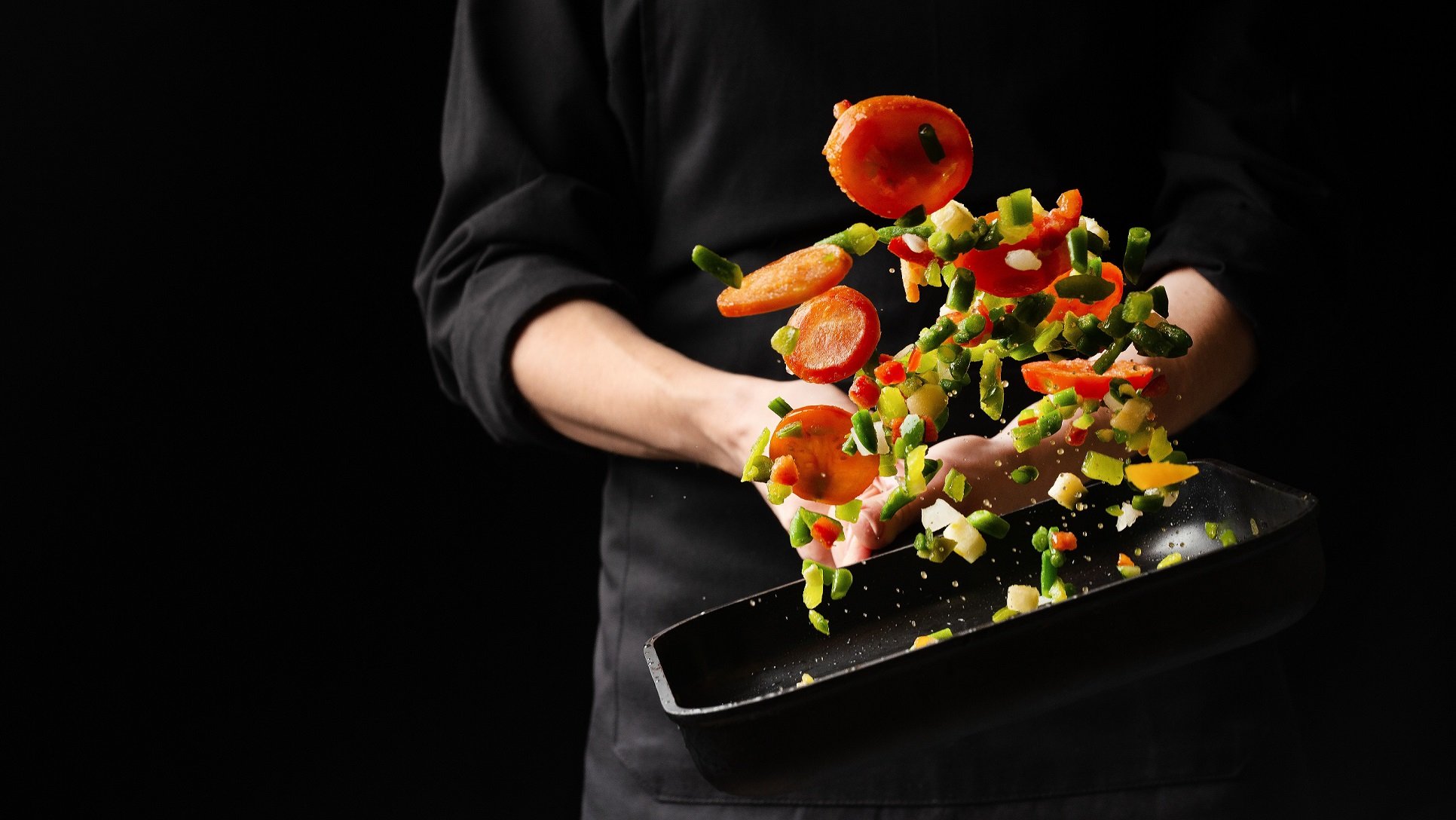The way you prepare your vegetables affects their nutritional value. What is the healthiest method to prepare them?
Image Credit: Anton27 via Shutterstock / HDR tune by Universal-Sci
First things first, a journey to a healthy meal commonly starts at the supermarket. It may be interesting to know what type of vegetables are the best to buy when it comes to nutritional value. Be sure to check out our article about the differences between fresh vegetables, frozen vegetables, and canned vegetables. (spoiler: perhaps counterintuitively, fresh vegetables aren't always the healthiest choice)
Does cooking vegetables remove nutrients?
Let's continue with the topic at hand. As you can imagine, all methods of cooking vegetables cause them to heat up. Heating vegetables causes cell walls to become porous and cell membranes to break, which leads to nutritions leaking out.
Additionally, some nutritions do not withstand high temperatures very well, especially not when they are exposed to these temperatures for a longer period of time.
All in all, we always lose some of the nutrients during the heating process. However, the method of heating vegetables can make a big difference in the amount of nutrition that remains.
Let's go over a few preparation methods:
Boiling vegetables in water
You may have noticed in the past that water tends to discolor while bioling certain vegetables.
People commonly let this colored water drain after the vegetables are cooked, but unfortunately, the colored water doesn't merely contain natural colorants but also many nutrients. By draining it, you can unintentionally lose over 50% of the healthy substances previously contained within the vegetables.
The nutrients you lose are, of course, mainly the ones that are soluble in water, such as vitamin c and b, but also more exotic substances such as glucosinolates and flavonoids.
Image Credit: Vladyslav Lehir via Shutterstock / HDR tune by Universal-Sci
The more water you use and the longer you boil your vegetables, the greater the effect and the more nutrition you lose.
Steaming vegetables
The idea behind steaming is that you cook food in the vapor of boiling water for a short period of time, which has the advantage that tastes are better preserved.
Taking the aforementioned issues with conventional cooking into consideration, steaming is a much better option for preserving healthy nutrients because the vegetables come into contact with far less water.
Preparing vegetables in a microwave
Instinctively you may think that food prepared in a microwave is much less healthy; this is a misconception.
A microwave oven uses microwaves to heat food. These microwaves are non-radioactive and non-hazardous. The microwaves solely cause water molecules in your food to vibrate. Because of this vibration, a lot of heat is generated, meaning that you only need to heat the vegetables for a short period of time.
Because you only need to heat vegetables for a short period of time, fewer healthy substances are broken down in the process. Microwaves do tend to damage the cell walls of vegetables, but because no extra water is used, most of the nutritions remain within the vegetables.
Preparing vegetables in an oven
Commonly the oven is set to about 180 degrees Celsius when preparing vegetables, but as long as there is still water within the vegetables, they won't get hotter than 100 degrees Celcius.
Be sure not to leave the vegetables in the oven for too long as they will eventually dry out, creating dark brown edges. The vegetables will become very hot in this scenario, breaking down healthy nutrition.
Overall, using the oven is a good option as long as you don't put the vegetables in for too long. Using an oven to prepare vegetables will lose you about the same amount of nutrition as using a microwave.
Stir-frying vegetables
The healthiest way to prepare vegetables is by stir-frying them, using a small amount of oil.
Stir-frying is a healthy way of preparing vegetables - Image Credit: nerudol via Shutterstock / HDR tune by Universal-Sci
Using oil instead of water is beneficial, as it prevents the aforementioned healthy water-soluble substances from leaking away, making it a more healthy option.
Fat-soluble substances do tend to partially leak out and end up in the oil. But usually, little to no oil remains in the pan after stir-frying, meaning that these substances are not lost.
The added oil does mean that some extra calories end up in your food. But vegetable oils are not unhealthy in themselves.
Healthiest ways to cook vegetables
All things considered, you always sacrifice some healthy substances when preparing vegetables. With healthy preparation methods like stir-frying, you lose at most 20%, while cooking in water can cause you to lose 50% or more.
Sources and further reading on the subject:
Flavonoids--food sources and health benefits (National Library of Medicine)
Anthocyanidins and anthocyanins: colored pigments as food, pharmaceutical ingredients, and the potential health benefits (Food & Nutrition Research)
Dr. Mathijs Dekker (Wageningen University & Research / Universiteit van Nederland)
Do we really have to wash fruit and vegetables? (Universal-Sci)
Research shows why some people can't help being disgusted by certain vegetables (Universal-Sci)
Are fresh vegetables healthier than frozen or canned vegetables? - (Universal-Sci)
If you enjoy our selection of content consider subscribing to our newsletter (Universal-Sci Weekly)
FEATURED ARTICLES:















